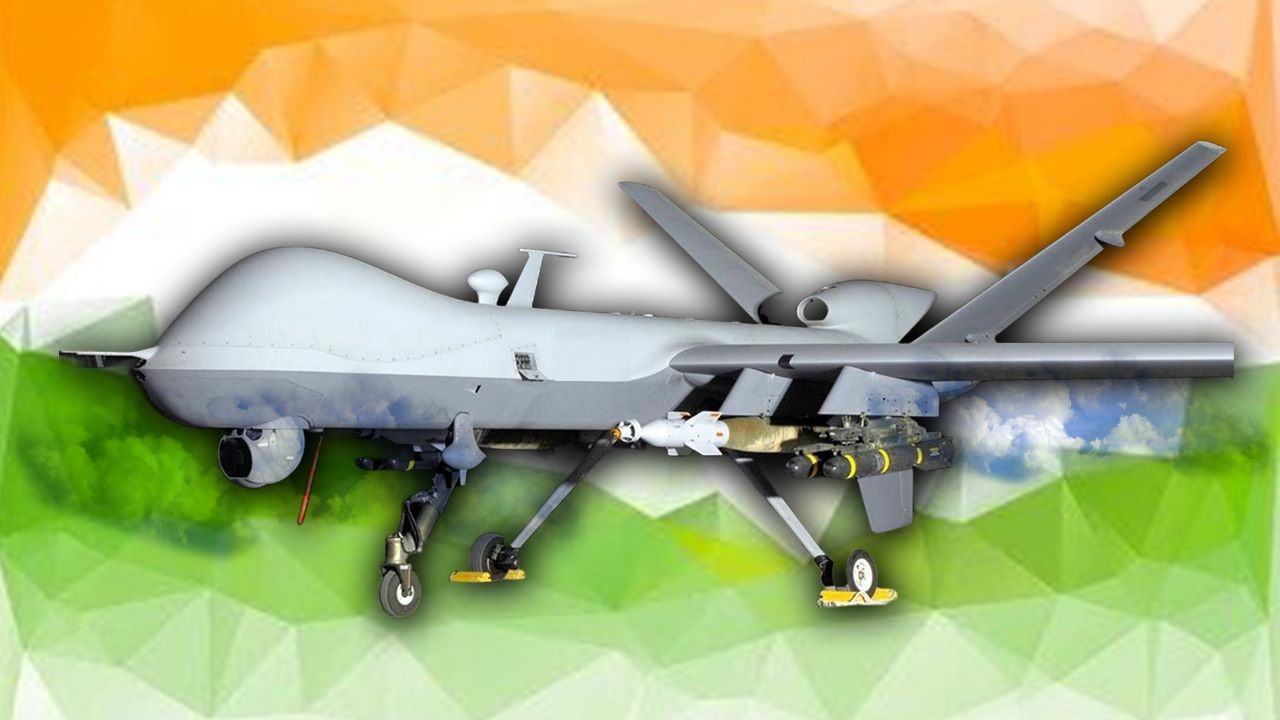India is inching closer to putting solar-powered “pseudo satellites” or high-altitude platform systems (HAPS) in place. The indigenous prototype achieved a critical milestone by staying afloat for 21 hours during the winter solstice flight trial.
It is a component of India’s drone wingman program, scheduled to conduct its maiden flight in 2024.
HAPS is akin to a remotely piloted aircraft that flies in the stratosphere at a height of 65,000 feet and bridges the gap between satellites orbiting the Earth and the drone flying within the atmosphere. The stratospheric reach puts them over any weather activity and air traffic, and being solar-powered, they can loiter for months.
A ‘pseudo satellite’ will drastically cut down the cost of surveillance when compared to a High-Altitude Long Endurance (HALE) drone like Reaper. A USAF Reaper class drone costs around $3500 per hour to operate; a HAPS class vehicle costs less than $500 per hour.
The HAPS prototype is designed by Bengaluru-based start-up NewSpace Research and Technologies Pvt. Ltd under the Innovation for Defense Excellence (iDEX) initiative by the Indian Ministry of Defense. The CEO of NewSpace Research and Technologies, Sameer Joshi, took to X to announce the critical milestone.
21+ hours in the Air – NewSpace Research and Technologies #NRT creates a #National #UAV #Endurance #Record #Benchmark in India
A huge #win for the #Indian #Aerospace & #Defence R&D #ecosystem; this feat was accomplished using our #cuttingedge #SolarPowered UAV development… pic.twitter.com/6K3BROp0Tn
— Sameer Joshi (@joe_sameer) December 23, 2023
The HAPS stayed in an hour for over 21 hours during the Winter Solstice, “the worst daylight day,” and met all its design goals for long endurance flight. Eventually, the full-scale prototype is expected to fly with an endurance of three months at an altitude of 65,000 feet.
Sameer Joshi, a former fighter pilot from the Indian Air Force (IAF), told the EurAsian Times: “HAPS is a strategic asset and a cross between a satellite and an airplane; with the endurance of a satellite and the agility of an aircraft for a persistent stratospheric presence. A must-have for India to augment the large gap between the demand and supply of ISR (Intelligence Surveillance and Reconnaissance) and communication data by a multitude of military and civilian users and agencies.”
These lightweight platforms can be controlled from a distance and have communication capabilities outside the line of sight. They can carry payloads with a range of sensors and navigational capabilities because of their modular construction.
In the next three months, work will be done to increase the endurance of the prototype. The HAPS project has been added by the Indian Air Force (IAF) to the government’s Rs 1,000 crore “Make I project,” meaning that 70 percent of the financing would come from the government.
The technology will be critical in future air combat. The UAV uses solar energy to travel during the day and its solar-charged battery to fly at night during the journey, which involves both day and night flying.
HAPS can overtake 70-80 percent of a satellite’s surveillance and communication workload at a fraction of the cost while having three times the life cycle viability. Also, unlike satellites where the payload is permanently lost, the payloads may be dynamically switched out based on need.
The HAPS has a broader area of the continent in its purview while flying at 65,000 feet. Theoretically, it was possible to see for 500 kilometers. It could also hear pretty well up to 800-1000 kilometers at these altitudes. Unlike satellites, these HAPS flying at a low speed can linger over an area of interest for a longer duration.
The continued confrontations with Chinese troops on the frigid heights of the Himalayas brought the lacunae in ISR to the fore. HAPS will help plug this gap.
A medium altitude long endurance (MALE) UAV operating at 25,000 feet with a 25-hour endurance will need to fly nearly 5000 sorties to have the same impact across the region of interest. In comparison, a HAPS air vehicle operating at 65,000 feet with an endurance of 24 hours will only need to fly 250 sorties.

World Moving Towards Low-Cost’ Pseudo-Satellite’
Airbus is leading the HAPS vertical with its Zephyr solar-powered high-altitude platform system (HAPS), which has completed a record-setting 36 days of flying.
The trials were carried out at both lower and stratospheric altitudes, the latter of which involved one mission that Airbus says set a new 76,100-foot world record for Zephyr’s category of solar-powered HAPS drone.
Operating outside the range of Area Access/Area Denial (A2/AD) systems, a fleet of HAPS with various capabilities operating alone or in concert could support various forces on the ground. Their capabilities could enhance communication, sensing, and intelligence capabilities for long periods with minimal logistical support requirements.
In 2023, BAE Systems also conducted the first successful stratospheric test flight of its HAPS drone platform called the PHASA-35. The firm claimed that during the 24-hour flight, the PHASA-35 drone reached altitudes of over 66,000 feet, entering the stratosphere above New Mexico, and making a flawless landing.
Advancements in AI, rechargeable batteries, and efficient solar power have made HAPS a possibility. With this combination, HAPS has an almost limitless range (barring system failure), allowing the UAVs to stay for months at a time.
The majority of tactical and operational UAVs are powered by combustion engines and pre-charged lithium-ion batteries, which restrict their range and length of mission. Long-haul flights might be possible with the use of solar energy and in-flight battery recharge.
At an altitude of 60,000 to 70,000 feet, weather conditions, particularly cloud cover, could be a challenge for an observation platform like HAPS, specifically affecting optical images. It can be rectified by putting a constellation of HAPS equipped with a range of sensors.
- Ritu Sharma has been a journalist for over a decade, writing on defense, foreign affairs, and nuclear technology.
- She can be reached at ritu.sharma (at) mail.com
- Follow EurAsian Times on Google News




